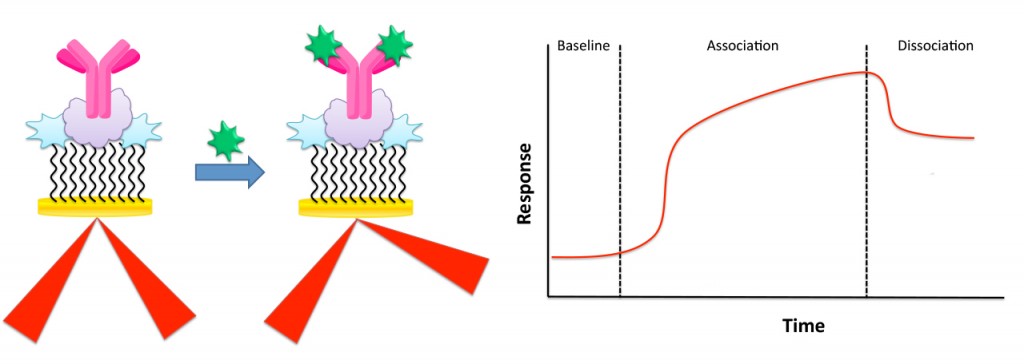Research Area 2: Surface Plasmon Resonance Spectroscopy (SPR)
The focus of this research area is the development of optical and optoelectrochemical techniques for characterization of surfaces and biointerfaces. Surface plasmon resonance spectroscopy (SPR) has been used to study protein adsorption and probe-target interactions. Recent advancements in electrochemical SPR (EC-SPR) have broadened the applicability of this analytical technique.

LEFT: The above figure depicts how SPR can be used in biosensing. Light reflected from a prism induces an evanescent field in both the metal and dielectric layer (e.g., layer with the biorecognition probe). Light is then reflected out of the prism and a detector records the angle at which resonance is satisfied. Binding of the target analyte to the surface-immobilized biorecognition probe results in a detectable change in the angle of reflectivity.
RIGHT: A typical sensorgram showing the change in the signal before and after addition of the target analyte.
Recent Publications
– Application of Electrochemical Surface Plasmon Resonance Spectroscopy for Characterization of Electrochemical DNA Sensors. Salamifar, S. E.; Lai, R. Y.*,Colloids and Surfaces B: Biointerfaces, 2014, 122, 835-839.
